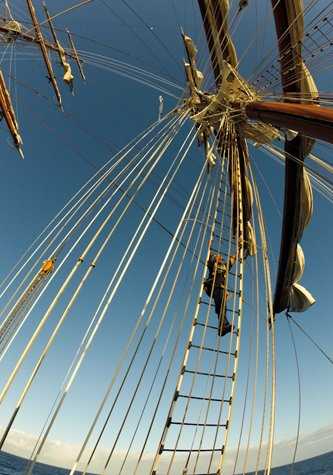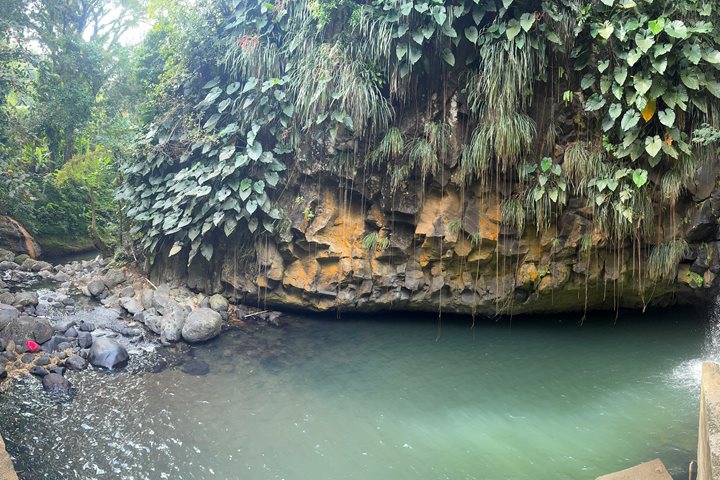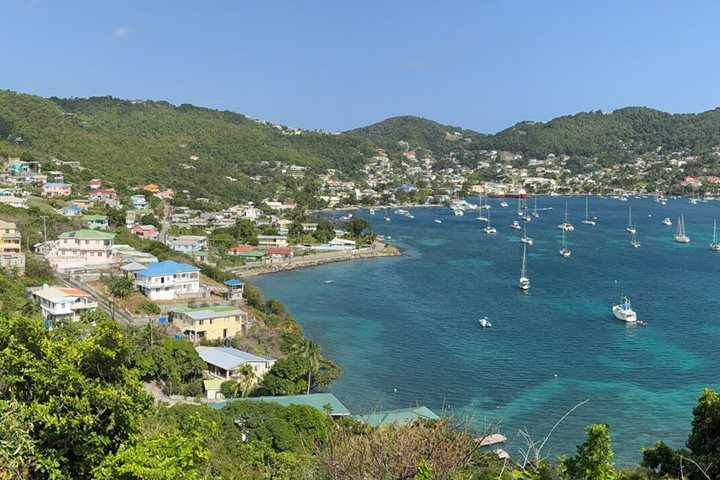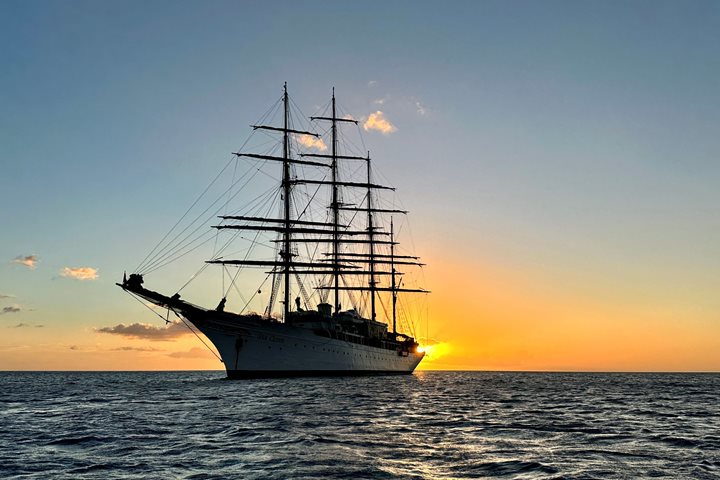We weighed anchor at 4:50 a.m. and left the lee of Dominica and sailed to the Iles des Saints. I saw Terre Haut in the misty distance and the characteristic large windmills as we sailed into the bay in front of the small village of Bourg. We are now officially in France as “the Saints” are part of the French “Départment of d’Outré Mer,” which has the same relationship to France as does Hawaii to the US. The archipelago consists of seven volcanic islands but only two have all year residents. These seven islands along with the much larger island of Guadeloupe comprise the archipelago. The inhabitants are French citizens, vote in all elections, and have all the perquisites of being French citizen and a member of the European Union. As such, the official currency here is the Euro. And the shops are not inexpensive and the standard of living is significantly higher than on Dominica and the rest of the islands we will visit on our journey.
We disembarked after breakfast and went up to the top of the closest mountain to visit the Fort Napoleon, built between 1841 and 1867. Some of the hardy in the group chose to walk up to the fort and while it is not far -- it takes about 30 minutes—it is mostly uphill. The fort is a wonderful place and is today chiefly a botanical garden with all the representative species of flowering trees on the Lesser Antilles represented. In addition to the trees there are wonderful cacti, euphorbia and aloes. We also visited the nesting areas of the very large land iguanas.
Fort Napoleon contains an ethnographic museum detailing the pre-Columbian history of the islands and a number of rooms devoted to the local craft of shipbuilding. Of particular interest is the illustrated “diorama” of the very important Battle of the Saints (April 12, 1782), where Admiral Rodney of his Majesty’s Government defeated Admiral Comte De Grasse, the leader of the opposing French forces and the visitor of the Battle of Yorktown, which ultimately led to the English defeat in the American war of Independence. The battle took place in these waters and was a route for the French and Spanish fleets who were seeking to capture the British island of Jamaica. After our visit to the fort we took taxis down to the city and spend the rest of the morning freely wandering in and out of the colorful shops. Some of our group went snorkeling at an adjoining island with Mike Greenfelder and Patrycja O’Brien. After lunch the sails went up and we were sailing along at almost 6.5 knots with a nice, fresh wind. Then, I took all interest onto the focsle for a discussion of the sails. As we sailed past the lee of Dominica we were privileged to see a radiant double rainbow. Mike gave a fine illustrated lecture on the fish species of the coral reef and at 6:15 p.m. Tom O’Brien gave a very informative and lively talk on the pre-history and history of the Sea Cloud.
After Tom’s talk we were invited to the traditional “open house” and were afforded the opportunity to visit the original staterooms designed by Hutton and Post. They are elegant and extravagant in a sophisticated way. I am always a bit struck, however, by the prospect of a working fireplace in a square rig sailing ship! And of course the 6’solid marble bathtubs with gold fixtures do evoke a sort of belle epoch now only accessible in memory and on Sea Cloud. Another wonderful dinner and we retired after a long and very full day. Tomorrow onto the island of St. Lucia….









